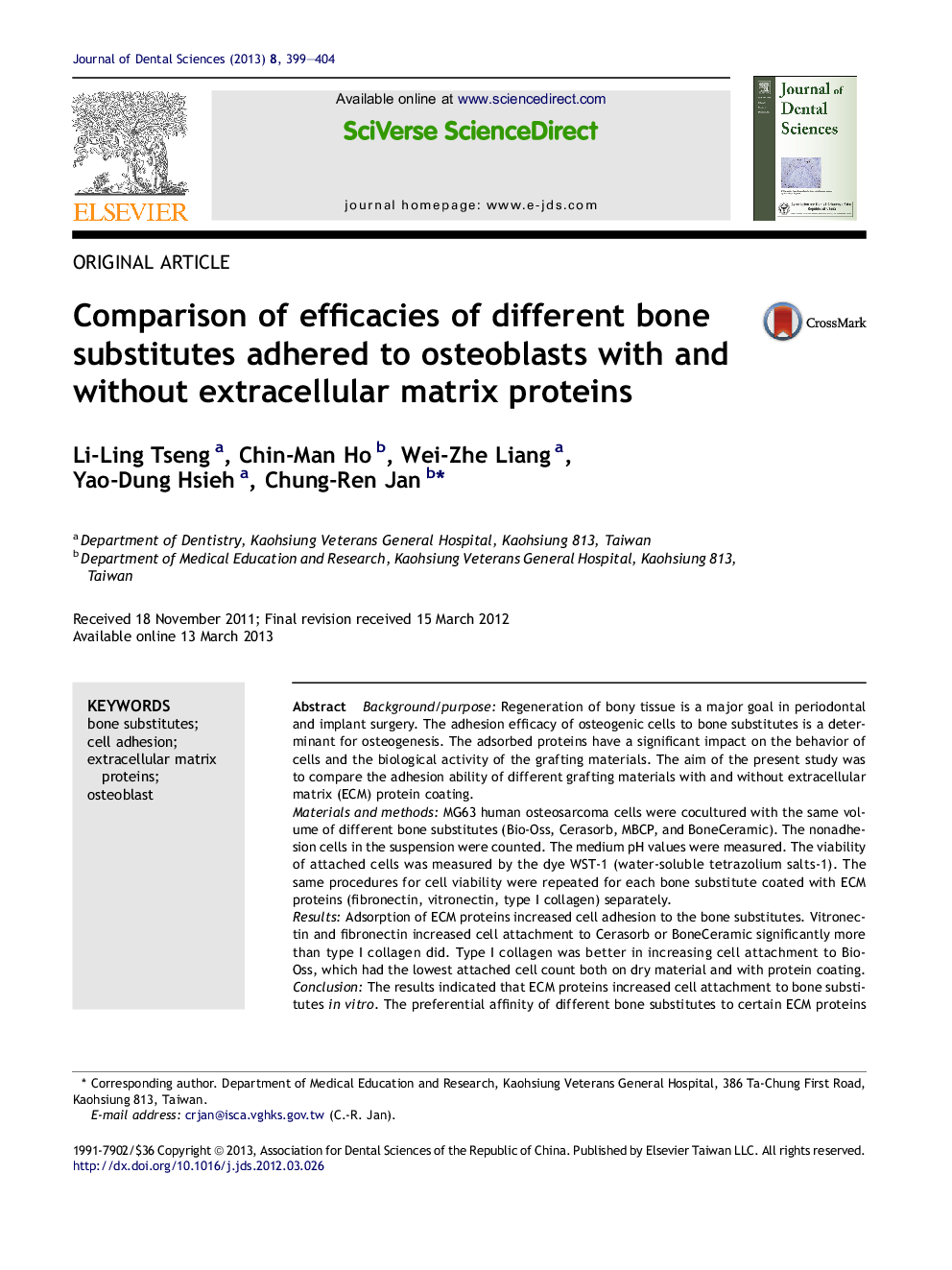| Article ID | Journal | Published Year | Pages | File Type |
|---|---|---|---|---|
| 3144602 | Journal of Dental Sciences | 2013 | 6 Pages |
Background/purposeRegeneration of bony tissue is a major goal in periodontal and implant surgery. The adhesion efficacy of osteogenic cells to bone substitutes is a determinant for osteogenesis. The adsorbed proteins have a significant impact on the behavior of cells and the biological activity of the grafting materials. The aim of the present study was to compare the adhesion ability of different grafting materials with and without extracellular matrix (ECM) protein coating.Materials and methodsMG63 human osteosarcoma cells were cocultured with the same volume of different bone substitutes (Bio-Oss, Cerasorb, MBCP, and BoneCeramic). The nonadhesion cells in the suspension were counted. The medium pH values were measured. The viability of attached cells was measured by the dye WST-1 (water-soluble tetrazolium salts-1). The same procedures for cell viability were repeated for each bone substitute coated with ECM proteins (fibronectin, vitronectin, type I collagen) separately.ResultsAdsorption of ECM proteins increased cell adhesion to the bone substitutes. Vitronectin and fibronectin increased cell attachment to Cerasorb or BoneCeramic significantly more than type I collagen did. Type I collagen was better in increasing cell attachment to Bio-Oss, which had the lowest attached cell count both on dry material and with protein coating.ConclusionThe results indicated that ECM proteins increased cell attachment to bone substitutes in vitro. The preferential affinity of different bone substitutes to certain ECM proteins was evident. Cerasorb and BoneCeramic had better MG63 human osteosarcoma cell adhesion ability than Bio-Oss and MBCP.
